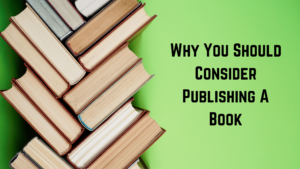Be it fiction or nonfiction, it should be interesting to read. You want your reader to look forward to what comes next. You want them to turn the page with anticipation, which means your book should be unputdownable. How do you make this happen?
In this blog, we’re going to help you learn a few tactics to make sure your chapters engage your reader to the end.
How To Make A Chapter Interesting For A Fiction Book
Do you love reading stories? Do you love writing them even more? Then you may already have an idea of the type of content that engages you. But this guide will help you explore the key points that make a chapter interesting to the reader. Let’s explore these key points in the order that you can use to make sure your fiction story becomes a bestseller.
1. Start Medias Res
Medias Res is Latin for ‘in the midst of things’ to describe a story as it opens with the protagonist or a character already in the middle of things. The middle is where things get interesting and the plot is about to thicken. This is the part where all the action takes place, so starting from the middle is a better option for your reader. People want action rather than having someone amuse themselves in a silent corner.
For instance, let’s look at Homer’s poem ‘The Iliad’ which was a narrative. The first few lines show the reader dropping directly into the middle of the Trojan War. You see the action unfold between the Greeks and Trojans. There’s bribery, kidnapping, death, and the plague all contained within the initial first scenes. You know just by reading that the chaos already began, and you’re just getting to know about it.
We present another example but one that is contradictory to medias res. If you’ve read 1984 by George Orwell, it starts from the beginning and not in the middle. For instance, the first chapter gives us a comprehensive peek into the protagonist’s view of how things work at his workplace. We don’t want to reveal much but just want to point out that most readers would find this a lengthy read until they finally reach the part where things start to get interesting. This book did make it big and sold a million copies but nowadays, people like to get to the climax before they can adjust to the backstory.
2. Hook Your Reader At The End Of Each Chapter
At least of your chapters, if not all need to be enticing enough to get your reader to flip over to the next chapter. Leave the chapter in the middle of a conflict. Keep it unresolved so that the reader would want to know what happens next.
3. Give Your Chapter A Focus Point
Every chapter will have a focus point, that is, a specific goal. For instance, chapter 3 talks about the protagonist’s childhood, and chapter 4 talks about their present-day at college. While following where the story goes in a chapter, add elements that will make it more interesting.
4. Decide The Km Per Hour
Not one of the most critical aspects but one to reckon with while deciding the reader’s journey with your book. We’re talking about the pacing of each chapter in unison with the others. Setting the length of the chapters in your novel will determine the rate of interest your reader develops.
That said, there are breaks in every chapter that are properly paced. You could compare these breaks to the ones you see in a film. Most novels have chapters that maintain equal length throughout the book. However, there is no fixed rule as creativity can target any length, even abnormally short or long chapters to peak the reader’s interest.
So, if you maintain 2000 words per chapter with a few chapters ahead written in 500 words, your reader is likely to get intrigued and influenced.

5. Title Your Chapters To Hint Intrigue
Giving a title for each chapter is a subtle way of telling your reader what’s about to happen. This way, they can look forward to what’s coming next.
6. Change The Course Of Perspective
Chapter breaks can also be used to represent alternative perspectives. This is to lead the reader to become more invested in the story. So, you can allow each character’s POV to take its course while events unfold.
7. Oscillate Between Scene And Dramatic Narrations
When writing a novel, there are two types of narration: Scene and Dramatic. The Scene Narration shows characters in action or in a conversation. The Dramatic Narration tells the reader what the character did, wherein the events take place offstage. You can oscillate between the two modes from scene to dramatic narration to make your story more engaging to the reader. Also, some scenes are more impactful with a scene narration, and some with a dramatic narration.
Example of a Scene Narration: Constitutes a specific place and time where dialogues are set in place. These also include description, action, and internal thoughts.
I open my eyes to see the light dimming through my blinds. That’s weird. Normally it’s brighter. I realize I overslept. I turn to look at my clock – it’s 06:27!
“Junior? You’ve been sleeping since morning; come down for supper this instant.” Mom calls from downstairs.
My guilt of oversleeping lays a heavy burden on my feet. I still get out of bed.
Example of a Dramatic Narration: Constitutes narrating a scene without getting into dialogues alongside descriptions and the character’s thoughts. The Objective or Dramatic Narration is often expressed as the ‘fly-on-the-wall’ narration.
But I was fated never to finish learning Nyaya Shastra. For even as I turned the page Dhai Ma came from the palace, waddling as fast as her bulk would allow. Out of breath and wheezing, her face an alarming red, she shooed my companions away. Then she whispered the news in my ear (but in her excitement, she was so loud that everyone heard): my father had decided–Sikhandi’s visit must have stirred up a veritable storm of anxiety in him–that I was to be married next month.
~The Palace of Illusions by Chitra Banerjee Divakaruni
Making your chapter interesting can have more than these 7 ways to work it right. At the end of the day, your creativity is subject to your imagination and the skills to put it on paper. Have fun and enjoy writing your fiction novel, the end result will be worth it.
If you’ve already written a novel and a second or third eye to evaluate it based on proofreading and editing, we’re your guys. Reach out to us for proofreading & editing services at Become Author.




